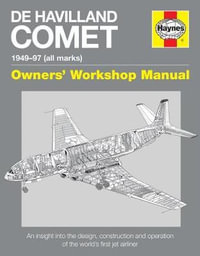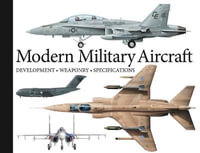| Interactive-Boundary-Layer Approach for Airfoils | p. 1 |
| Introduction | p. 1 |
| General Features of Viscous Interactions on Airfoils | p. 2 |
| Mathematical Models for the Interaction Process: Inviscid Flow | p. 5 |
| Mathematical Models for the Interaction Process: Viscous Flow | p. 8 |
| Transition and Its Prediction | p. 10 |
| References | p. 12 |
| Two-Dimensional Incompressible Flows: Inviscid Method | p. 13 |
| Introduction | p. 13 |
| Hess-Smith Panel Method | p. 14 |
| Viscous Effects | p. 20 |
| Flowfield Calculation in the Wake | p. 22 |
| FORTRAN Program | p. 24 |
| MAIN | p. 25 |
| Subroutine COEF | p. 28 |
| Subroutine OBKUTA | p. 30 |
| Subroutine GAUSS | p. 31 |
| Subroutine VPDIS | p. 31 |
| Subroutine CLCM | p. 34 |
| Subroutine VPDWK | p. 34 |
| References | p. 36 |
| Two-Dimensional Incompressible Flows: Boundary-Layer Method | p. 37 |
| Introduction | p. 37 |
| Some Turbulence Models | p. 39 |
| k- Model | p. 40 |
| Reynolds Stress Models | p. 42 |
| Comments on k- and Reynolds Stress Models | p. 44 |
| Zero-Equation Models | p. 45 |
| Transformed Boundary-Layer Equations | p. 48 |
| Transformed Equations: Standard Mode | p. 49 |
| Transformed Equations: Inverse Mode | p. 50 |
| Transformed Equations: General Form | p. 51 |
| Numerical Method | p. 51 |
| Numerical Formulation | p. 52 |
| Newton's Method | p. 55 |
| Block-Elimination Method | p. 56 |
| Bordering Algorithm | p. 58 |
| FORTRAN PROGRAM | p. 63 |
| MAIN | p. 63 |
| Subroutine INPUT | p. 67 |
| Subroutine IVPL | p. 71 |
| Subroutine GROWTH | p. 72 |
| Subroutine HIC | p. 73 |
| Subroutine EDDY | p. 75 |
| Subroutine COEF | p. 77 |
| Subroutine SWTCH | p. 79 |
| Subroutine WAKEPR | p. 80 |
| Subroutine INTEG | p. 82 |
| Subroutine DIFF1 | p. 82 |
| Subroutine LNTP | p. 83 |
| Subroutine AMEAN | p. 83 |
| Subroutine BORALG | p. 84 |
| Subroutine OUTPUT | p. 86 |
| References | p. 87 |
| Two-Dimensional Incompressible Flows: Transition Method | p. 89 |
| Introduction | p. 89 |
| en-Procedure | p. 91 |
| Numerical Method | p. 93 |
| Numerical Formulation | p. 94 |
| Calculation of Dimensional Frequencies: Neutral Stability Curve | p. 97 |
| Calculation of Transition | p. 100 |
| Estimation of Eigenvalues | p. 100 |
| FORTRAN Program | p. 101 |
| MAIN | p. 102 |
| Subroutine VELPRO | p. 104 |
| Subroutine CSAVE | p. 105 |
| Subroutine NEWTON | p. 110 |
| Subroutine NEWTONI | p. 112 |
| References | p. 114 |
| Applications of the Calculation Method: Airfoils in Incompressible Flows | p. 115 |
| Introduction | p. 115 |
| Airfoilsat High Reynolds Numbers | p. 117 |
| Accuracy of the en-Method for Flows with Separation | p. 120 |
| Experimental Data of Gault | p. 123 |
| Experimental Data of Cousteix and Pailhas | p. 124 |
| Experimental Data of Hoheisel et al | p. 125 |
| Airfoils at Low Reynolds Numbers | p. 128 |
| Eppler Airfoil | p. 129 |
| Liebeck Airfoils | p. 130 |
| Airfoils at Low Mach Numbers | p. 136 |
| Prediction of Ice Shapeson Airfoils | p. 138 |
| Flowfield Calculation | p. 139 |
| Particle Trajectory Calculation | p. 140 |
| The Energy Balance and Ice Accretion | p. 141 |
| Prediction of Ice Shapes | p. 147 |
| Airfoils with Leading-Edge Roughness | p. 149 |
| Results for Airfoils with Leading-Edge Roughness | p. 150 |
| Results for Iced Airfoils | p. 151 |
| Effect of Ice on Airfoil Stall at High Reynolds Numbers | p. 154 |
| Multielement Airfoils | p. 156 |
| Interaction Law | p. 156 |
| Turbulence Model | p. 157 |
| Solution Procedure | p. 157 |
| Results for an Airfoil with Flap-Well | p. 158 |
| Results for Two-Element Airfoils | p. 160 |
| Summary | p. 165 |
| References | p. 166 |
| Two-Dimensional Compressible Flows | p. 169 |
| Introduction | p. 169 |
| Boundary-Layer Equations | p. 170 |
| Transformed Equations: Standard Mode | p. 171 |
| Transformed Equations: Inverse Mode | p. 172 |
| Transformed Equations: General Form | p. 174 |
| Numerical Method | p. 174 |
| Numerical Formulation | p. 175 |
| Newton's Method | p. 177 |
| Block-Elimination Method | p. 179 |
| Bordering Algorithm | p. 180 |
| Subroutine SOLV5 | p. 183 |
| FORTRAN Program | p. 187 |
| References | p. 188 |
| Two-Dimensional Incompressible Unsteady Flows: Inviscid Method | p. 189 |
| Introduction | p. 189 |
| Unsteady Flow Model | p. 189 |
| Influence Coefficients | p. 191 |
| Solution Procedure | p. 194 |
| Velocity Potential and Pressure Distribution | p. 197 |
| Viscous Effects | p. 199 |
| Fortran Program | p. 200 |
| References | p. 200 |
| Two-Dimensional Unsteady Incompressible Flows:Boundary-Layer Method | p. 201 |
| Introduction | p. 201 |
| Initial Conditions | p. 203 |
| Transformed Equations | p. 203 |
| Transformed Equations: Standard Mode | p. 203 |
| Transformed Equations: Inverse Mode | p. 205 |
| Transformed Equations: General Form | p. 205 |
| Numerical Method: Flows without Reversal | p. 206 |
| Numerical Method: Flows with Reversal | p. 210 |
| Zig-Zag Box | p. 210 |
| Characteristic Box | p. 212 |
| References | p. 218 |
| Application of the Calculation Method: Airfoils in Incompressible Unsteady Flows | p. 219 |
| Introduction | p. 219 |
| Separation and Reattachment Near the Leading Edge of a Thin Oscillating Airfoil | p. 222 |
| Model Problem | p. 222 |
| Initial Conditions | p. 224 |
| The Question of Singularity on an Oscillating Airfoil | p. 227 |
| Interaction as an Answer to the Question of Singularity | p. 233 |
| Steady and Unsteady Airfoil Flows | p. 238 |
| Results of Unsteady Flows | p. 242 |
| Initiation of Dynamic Stallona Pitching Airfoil | p. 248 |
| Summary | p. 251 |
| References | p. 251 |
| Three-Dimensional Incompressible Flows: Inviscid Method | p. 253 |
| Introduction | p. 253 |
| General Features of the Method of Solution | p. 256 |
| Order of Input Points | p. 256 |
| Useofa Dipole Distribution to Represent Vorticity | p. 256 |
| Lift Carry-Over: The Extra Strip | p. 257 |
| The Matrix of Induced Velocities | p. 258 |
| Formation of the Panels from Input Points | p. 259 |
| Induced-Velocity Formulas | p. 262 |
| Form of the Surface Dipole Distribution | p. 262 |
| Variation over a Trapezoidal Panel | p. 263 |
| Useofa Far-Field Approximation | p. 264 |
| Notation for the Induced Velocities | p. 265 |
| Far-Field Formulas for the Velocity Induced by a Lifting Panel | p. 266 |
| Near-Field Formulas for the Velocity Induced by a Lifting Panel | p. 267 |
| The Velocity Induced by a Wake Panel | p. 269 |
| Option for Semi-Infinite Last Wake Panel | p. 270 |
| Assembly of Final Velocities and Solution of the Equations for the Source and Dipole Strengths | p. 271 |
| Final Velocities | p. 271 |
| The Kutta Condition | p. 272 |
| Iterative Matrix Solution | p. 272 |
| References | p. 274 |
| Three-Dimensional Flows: Boundary-Layer Method | p. 275 |
| Introduction | p. 275 |
| Boundary-Layer Equations | p. 275 |
| Initial Conditions | p. 278 |
| Quasi-Three-Dimensional Boundary-Layer Equations | p. 278 |
| Attachment Line Equations | p. 279 |
| Turbulence Model | p. 280 |
| Interaction Law | p. 281 |
| Quasi-Three-Dimensional Hilbert Integral | p. 282 |
| Interaction Law for Three-Dimensional Flows | p. 282 |
| Interface Program | p. 283 |
| Choice of the Surface Coordinate System | p. 283 |
| Geometrie Parameters of the Coordinate System | p. 286 |
| Calculation of Inviscid Velocity Components for Boundary-Layer Grid | p. 288 |
| Transformed Equations | p. 289 |
| Transformed Equations: Standard Mode | p. 289 |
| Transformed Equations: Inverse Mode | p. 293 |
| Solution of the Three-Dimensional Boundary-Layer Equations: Standard Mode | p. 294 |
| Three-Dimensional Steady Flows Without Reversal | p. 296 |
| Three-Dimensional Steady Flows with Reversal | p. 302 |
| Solution of the Three-Dimensional Boundary-Layer Equations: Inverse Mode | p. 305 |
| Numerical Formulation of the Three-Dimensional Boundary-Layer Equations with the Zig-Zag Scheine | p. 306 |
| Numerical Formulation of the Quasi-Three-Dimensional Boundary-Layer Equations | p. 310 |
| Modelling of Viscous Effects in Three-Dimensional Inviscid Flows | p. 311 |
| Boundary-Layer Equations for Restricted Three-Dimensional Flows | p. 313 |
| Boundary-Layer Equations with Infinite-Swept-Wing Approximation | p. 313 |
| External Velocity Distribution for Infinite Swept Wings | p. 315 |
| Boundary-Layer Equations with Conical Flow Approximation | p. 316 |
| References | p. 323 |
| Three-Dimensional Flows: Transition Method | p. 325 |
| Introduction | p. 325 |
| Eigenvalue Formulations for Three-Dimensional Flows | p. 326 |
| Numerical Method for Incompressible Flows | p. 329 |
| Calculation of Dimensional Frequencies: The Zarf | p. 329 |
| Calculation of Transition | p. 332 |
| Estimation of Eigenvalues | p. 333 |
| Numerical Method for Compressible Flows | p. 333 |
| References | p. 337 |
| Applications of the Calculation Method to Three-Dimensional Subsonic and Transonic Flows | p. 339 |
| Introduction | p. 339 |
| Accuracy of the en-Method for Three-Dimensional Flows | p. 339 |
| Incompressible Flows | p. 340 |
| Compressible Flows | p. 344 |
| Effect of Curvature on Transition | p. 348 |
| Incompressible Linear Stability Equations with Curvature Terms | p. 350 |
| Effects of Sweep Angle and Reynolds Numberon Transition with Curvature Effect Included in the Stability Equations | p. 351 |
| Subsonic Flows: Wing Alone | p. 355 |
| SAAB Wing | p. 358 |
| RAE Wing | p. 361 |
| Subsonic Flows: Multielement Wings | p. 369 |
| Wing-Flap Configurations | p. 370 |
| Slat-Wing-Flap Configurations | p. 371 |
| Summary | p. 373 |
| Prediction of the Aerodynamic Performance Degradation of an Aircraft in Natural Icing Conditions | p. 373 |
| Prediction of Ice Shapes on Wings | p. 373 |
| Effect of Icing Conditions on Lift and Drag Coefficients | p. 378 |
| Summary | p. 380 |
| Transonic Flows | p. 381 |
| ONERA-M6 Wing | p. 385 |
| Douglas Wing/Fuselage Configuration | p. 386 |
| Calculation of Particle Trajectories | p. 387 |
| References | p. 390 |
| Subject Index | p. 393 |
| Table of Contents provided by Publisher. All Rights Reserved. |
























